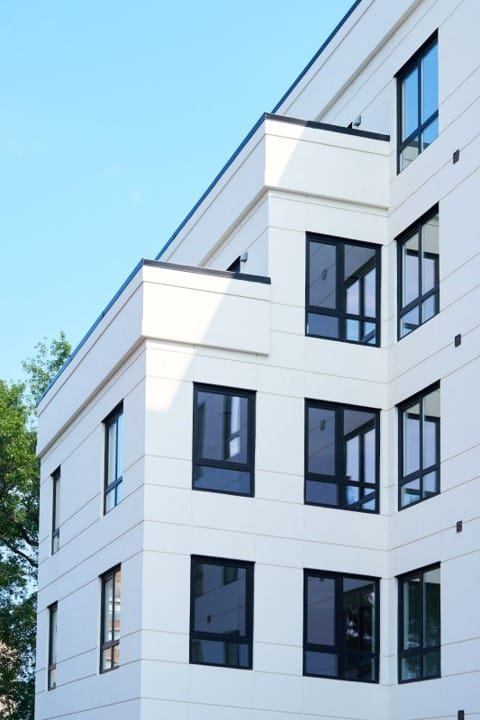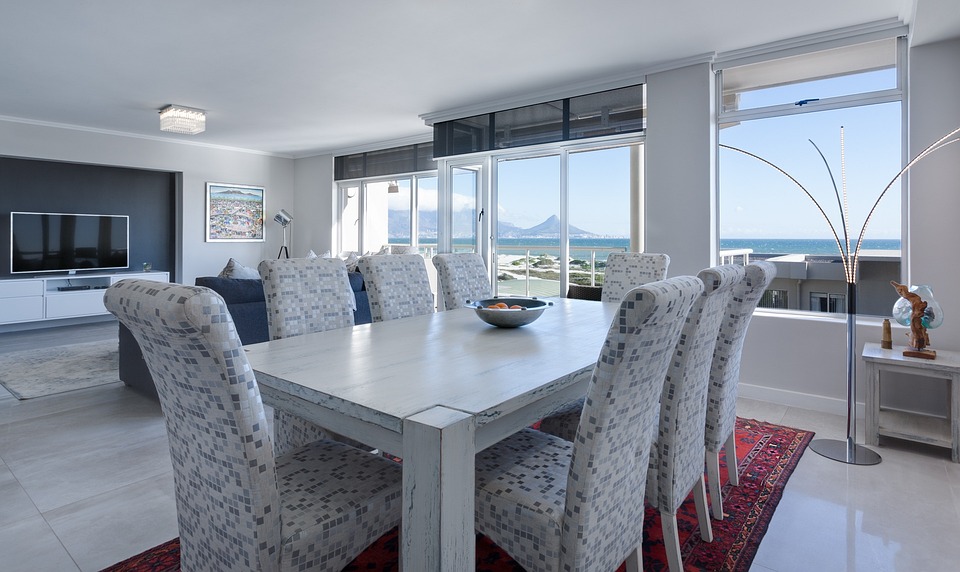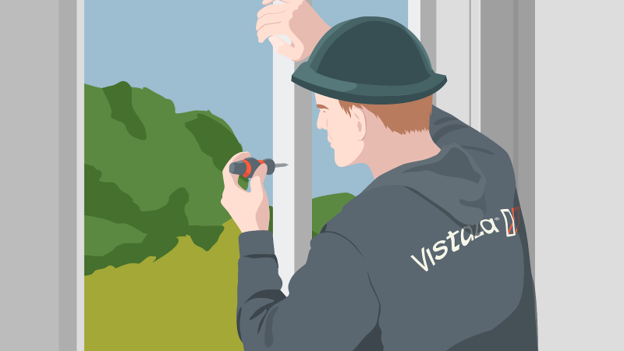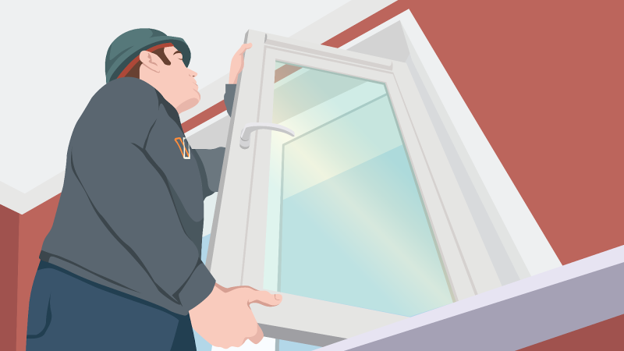In today’s rapidly evolving marketplace, energy-efficient windows have emerged as a significant contributor to environmental conservation. The demand for such eco-friendly solutions is on the rise, as consumers become more conscious of their carbon footprint and seek out ways to enhance their home’s energy efficiency. Eco-friendly windows not only support this shift towards sustainability by reducing energy loss but also align with customers‘ desires to lower their environmental impact, showcasing how businesses can respond to the growing eco-conscious trend.

These windows, incorporating advancements like Low-E glass, double pane windows, and energy star certified windows, directly address consumer demand for products that offer both direct and indirect cost savings, alongside fostering energy conservation. The incorporation of materials such as wood windows or aluminum windows further diversifies the eco-friendly option offering, catering to varied aesthetic and functional preferences. By optimizing natural energy, these windows serve as a pivotal element in building a sustainable future and enhancing a property’s appeal to environmentally-aware customers.
Characteristics of Eco Friendly Windows
Eco-friendly windows are integral to enhancing a home’s energy efficiency and reducing its carbon footprint. These windows embody several key characteristics:
-
Durability and Low Maintenance: Crafted from high-quality materials like wood, vinyl, and fiberglass, eco-friendly windows are built to withstand the test of time. Wood offers natural insulation and, when sourced responsibly, serves as an eco-friendly option.Vinyl and composite materials, often incorporating recycled content, provide sustainability through their durability and low maintenance requirements.
-
Energy Efficiency: Featuring advanced technologies such as Low-E coatings and double or triple glazing, eco-friendly windows act as barriers to heat flow. Low-E coatings reflect infrared light, maintaining comfortable indoor temperatures and reducing the need for artificial heating and cooling. Double and triple-pane windows improve insulation by trapping air or inert gasses between panes, further enhancing energy conservation.
-
Recyclability: Many eco-friendly windows are made from materials that can be recycled at the end of their lifecycle, reducing waste and promoting environmental sustainability. This aspect, combined with their energy-efficient design, contributes to a significant reduction in a home’s carbon footprint.
3 Top Benefits of Eco Friendly Windows

Direct Cost Savings
-
Lower Utility Bills: Investing in energy-efficient windows can lead to significant savings on utility bills. By enhancing insulation and reducing the need for heating and cooling, customers can see a decrease in energy consumption. This reduction translates to lower monthly expenses, with energy-efficient windows reducing residential heating and cooling energy use by 25%-30%. Additionally, replacing old windows with energy-efficient ones can result in a 15% decrease in the average power bill.
-
Potential Tax Incentives: Beyond the immediate savings on utility bills, customers may also benefit from potential tax incentives. Governments often offer rebates and incentives for energy-efficient home improvements, recognizing the role they play in energy conservation.
Indirect Cost Savings
-
Reduced Maintenance: Energy-efficient windows require less upkeep due to their design which minimizes condensation and the growth of mildew. This characteristic leads to savings on maintenance and cleaning costs over time.
-
Durable Materials: The use of durable materials in eco-friendly windows means a longer lifespan and fewer replacements. This durability translates to long-term savings for customers, as the initial investment pays off over the years.
Low Carbon Footprint
-
Environmental Impact: By optimizing energy usage, energy-efficient windows contribute significantly to reducing a home’s carbon footprint. They reduce the amount of energy that escapes through windows, leading to lower greenhouse gas emissions and savings on energy bills. This reduction supports sustainability goals by decreasing the environmental impact associated with electricity production.
-
Healthier Living Environment: Improved insulation and reduced entry of exterior pollutants contribute to a healthier indoor air quality. This benefit not only enhances comfort but also supports a greener, more sustainable lifestyle by mitigating the effects of climate change.
Direct Cost Savings
Energy-efficient windows offer significant direct cost savings for customers, primarily through lower energy consumption and reduced utility bills. Here’s a breakdown of how these savings manifest:
-
Lower Energy Consumption: By minimizing heat transfer, energy-efficient windows reduce the workload on heating, ventilation, and air conditioning (HVAC) systems, leading to lower energy consumption. This efficiency is critical in maintaining comfortable indoor temperatures without over-relying on artificial heating or cooling.
-
Cost Savings on Utility Bills: The reduced energy consumption directly translates to lower utility bills. customers can expect to save between $126 to $465 annually by upgrading to energy-efficient windows. Over the lifespan of the windows, these savings can be substantial, with energy-efficient windows potentially saving up to 34% on annual energy bills.
-
Professional Installation and Energy Star Certification: Opting for professional installation ensures the windows are correctly fitted, minimizing gaps or air leaks. This precision further enhances energy conservation. Additionally, choosing ENERGY STAR-certified windows guarantees compliance with state energy performance standards, ensuring maximum savings. These windows are designed to be a cost-effective solution, offering long-term savings through reduced energy costs despite the initial investment.
Indirect Cost Savings
Energy-efficient windows extend beyond direct financial benefits, offering indirect cost savings that enhance both the home’s value and living quality. These advantages include:
-
UV Protection and Interior Preservation: Modern windows equipped with advanced window film technology effectively block harmful UV rays, safeguarding interior furnishings, walls, and flooring from fading and extending their lifespan. This protection translates into savings by reducing the need for frequent replacements or refurbishments of interior decor.
-
Noise Reduction for Enhanced Comfort: The incorporation of multiple glazing layers and tight seals in energy-efficient windows serves as a barrier to external noise, creating a quieter and more serene living environment. This sound insulation is particularly beneficial in urban areas or homes near busy streets, improving the quality of life for residents .
-
Improved Energy Efficiency through Additional Measures: customers can further enhance their windows’ efficiency by addressing air leaks with caulk and weatherstrip, adding energy-efficient window coverings, and installing storm windows or panels to minimize energy loss, Exterior shading solutions, such as awnings and overhangs, also contribute by blocking direct sunlight and reducing cooling costs during warmer months. These measures not only decrease the reliance on HVAC systems but also contribute to the overall energy efficiency of the home, leading to reduced operating costs and a more comfortable living area.
Low Carbon Footprint
The National Fenestration Rating Council (NFRC) plays a crucial role in ensuring the eco-friendliness of windows through rigorous testing. They assess windows and skylights to provide ratings based on their efficiency in heat gain and loss, applying a U-factor and Solar Heat Gain Coefficient (SHGC) to each product. A lower U-factor indicates reduced heat gain or loss, while a lower SHGC means fewer UV rays penetrate through the glass, contributing to a home’s energy conservation and reduced carbon footprint.
-
Impact on Carbon Footprint: Eco-friendly windows can dramatically decrease a household’s carbon footprint. On average, energy-efficient windows can reduce a household’s annual carbon footprint by up to 12%, equating to a saving of between 246-2001 pounds of CO2 per year compared to non-energy-efficient alternatives. This significant reduction underscores the environmental benefits of opting for eco-friendly windows.
-
Reduction in Energy Use: One of the most profound benefits of installing energy-efficient windows is the potential reduction in energy use within buildings, which can be as much as 40%. This substantial decrease not only contributes to a lower carbon footprint but also aligns with broader energy conservation efforts, making energy-efficient windows a pivotal component in the fight against climate change.
What is the Most Eco Friendly Window Material?
When considering the most eco-friendly window materials, several options stand out due to their sustainable features and energy efficiency:

-
Wood: Recognized for its natural insulation properties and aesthetic appeal, wood frames can enhance a home’s energy efficiency. However, they demand regular maintenance and may not fare well in unpredictable weather conditions. Opting for wood certified by the U.S. Forest Stewardship Council is advisable for sustainability.
-
uPVC: uPVC emerges as an eco-friendly window material, especially in the context of reducing heating costs and promoting sustainability in home design. With the variance in heating expenses ranging from $809 to $2,285 annually, the significance of energy-efficient solutions becomes apparent. uPVC windows offer a compelling proposition through their low heat conductivity, exemplifying their ability to minimize heat transfer and conserve energy effectively. Unlike traditional aluminum frames, uPVC’s durability and superior insulation properties make it a standout choice for developers striving for long-term environmental stewardship.
-
Fiberglass: This material is made from glass particles bound with resin, offering durability, energy efficiency, and minimal maintenance. Fiberglass has garnered Energy Star, LEED, and Green Globe ratings, marking it as a superior eco-friendly option.
-
aluminum: aluminum stands out for its infinite recyclability, contributing zero waste to landfills. It’s known for its energy efficiency, long-lasting nature, and thermal breaks. Despite its versatility and durability, aluminum is considered the most environmentally friendly window material when compared to fiberglass, wood, and vinyl.
-
Low-E Glass: Coated with a thin layer of silver, Low-E glass reflects radiant heat while allowing visible light to pass through, effectively keeping heat out. This property makes it an excellent choice for reducing solar heat gain and enhancing a home’s energy efficiency.
-
Insulated and Recycled Glass: Offering great insulation without significant heat gain or loss, insulated glass can be further improved with argon gas filling. Additionally, choosing windows made from recycled glass contributes to sustainability, as glass is a highly sustainable material, endlessly recyclable, and made from natural resources.
How Vistaza Can Help
Vistaza stands at the forefront of promoting energy conservation and enhancing home’s energy efficiency through its comprehensive range of energy-efficient windows. Their offerings are not just limited to aesthetics but are deeply rooted in functionality and sustainability. Here’s how Vistaza can assist:
-
Energy Star Certified Windows: Vistaza ensures that all its windows meet or exceed ENERGY STAR certification requirements, providing customers with top-tier energy efficiency. This certification is a testament to their commitment to reducing energy consumption and utility bills, while also contributing to a more sustainable environment.
-
Customizable Solutions for Every Need:
-
Multifamily Residential Projects: Vistaza’s windows enhance the visual appeal and energy efficiency of multifamily residential spaces, offering customizable options for robust structural designs.
-
Sound Control: For urban dwellings, Vistaza windows come equipped with soundproofing technologies, creating tranquil living spaces free from external noise.
-
Durability and Low Maintenance: Designed to stand the test of time, these windows provide longevity and require minimal maintenance, making them a cost-effective solution for multifamily housing complexes.
-
-
Personalized Services for Architects and Developers: Vistaza provides tailored services, including structurally engineered designs and partnership beyond just an order. This approach allows for the realization of bold architectural visions, ensuring long-term investment value and superior energy-efficient performance.
For more information in regards to eco friendly windows reach out to Vistaza’s expert team.




